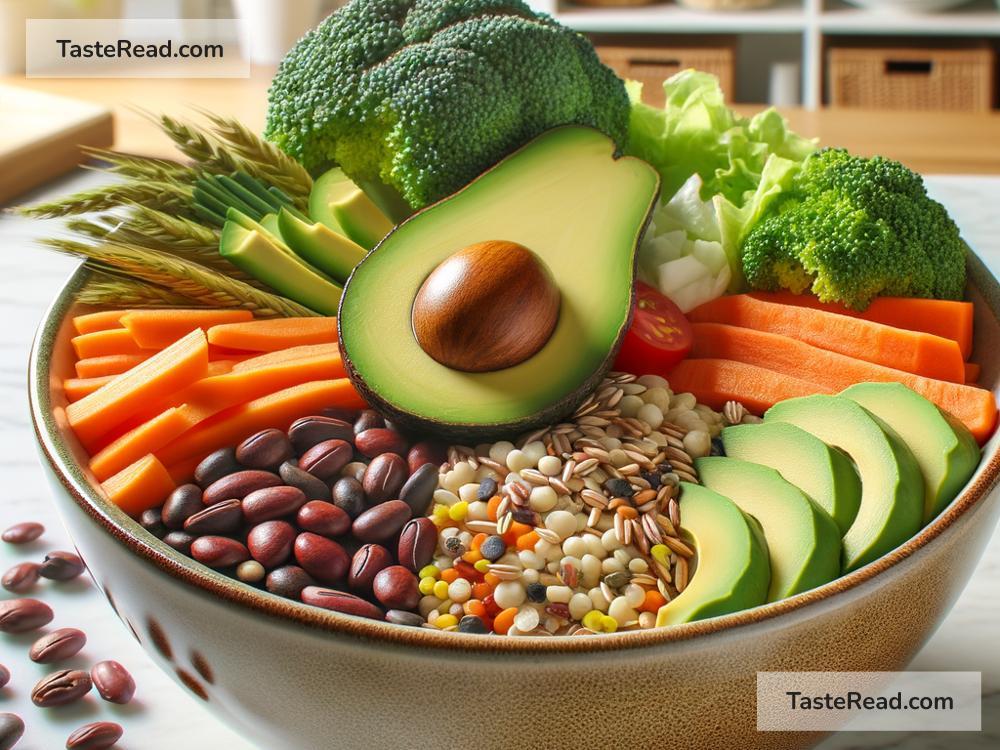Understanding the Role of Dietary Fiber
When it comes to eating healthy, most people think about things like cutting back on sugar, avoiding junk food, and eating more fruits and vegetables. But there’s another key nutrient that often doesn’t get as much attention: dietary fiber. Fiber is incredibly important for your body, and understanding how it works can make a big difference in your overall health. Let’s dive in to learn more about dietary fiber, its benefits, and how you can incorporate it into your daily meals.
What Is Dietary Fiber?
Dietary fiber is a type of carbohydrate found in plants. Unlike other carbs, such as sugars and starches, fiber cannot be broken down and absorbed by the body. Instead, it passes through your digestive system, and along the way, it does plenty of good things for your health.
There are two types of dietary fiber: soluble and insoluble.
-
Soluble Fiber: This type of fiber dissolves in water, forming a gel-like substance. Soluble fiber helps slow digestion and can help lower cholesterol levels and control blood sugar levels. You can find soluble fiber in foods like oats, apples, beans, and carrots.
-
Insoluble Fiber: This type of fiber does not dissolve in water. Instead, it adds bulk to your stool and helps keep things moving in your digestive system. Insoluble fiber can be found in foods like whole grains, nuts, seeds, and raw vegetables.
Both types of fiber are important, and most fiber-rich foods usually contain a mix of both.
Why Is Fiber Important?
Fiber has many benefits for your health. Here are some of the big ways it helps your body:
-
Improves Digestive Health
Fiber is best known for keeping your digestive system running smoothly. Insoluble fiber adds bulk to your stool, making it easier to pass and preventing constipation. If you’ve ever felt bloated or had trouble going to the bathroom, adding more fiber to your diet might help. -
Helps You Feel Full
Foods high in fiber take longer to eat and digest, which can help you feel full for longer. This can be especially helpful if you’re trying to manage your weight, as you’ll be less likely to snack on unhealthy foods between meals. -
Lowers Cholesterol
Soluble fiber binds to cholesterol in your digestive system and helps remove it from your body. This can lead to lower levels of “bad” LDL cholesterol, which in turn helps support heart health. -
Controls Blood Sugar Levels
For people with diabetes or prediabetes, fiber can be a great ally. Soluble fiber slows down how quickly your body absorbs sugar, which can help prevent sudden spikes in blood sugar levels. -
Supports Overall Health
Eating a high-fiber diet has been linked to a reduced risk of certain diseases, including heart disease, type 2 diabetes, and colon cancer. It’s also great for keeping your gut healthy, as fiber encourages the growth of good bacteria in your digestive system.
How Much Fiber Do You Need?
Fiber is crucial, but many of us don’t get enough of it in our diets. Health experts recommend the following daily amounts:
- Men: About 30-38 grams
- Women: About 21-25 grams
- Children: Amount varies based on age, generally around 15-25 grams
Unfortunately, most people only eat about half of the recommended amount. It’s a good idea to keep track of your fiber intake and gradually increase it if needed. Remember, it’s always best to get fiber from natural food sources instead of supplements.
Best Sources of Fiber
Adding fiber to your diet is simple and delicious. Here are some of the best fiber-rich foods:
- Fruits: Apples, pears, oranges, bananas, berries (like raspberries and strawberries)
- Vegetables: Carrots, broccoli, spinach, sweet potatoes, peas
- Whole Grains: Brown rice, quinoa, oatmeal, whole wheat bread, popcorn
- Legumes: Beans, lentils, chickpeas
- Nuts and Seeds: Almonds, flaxseeds, chia seeds
Whenever possible, opt for whole, unprocessed versions of these foods. For example, eating an apple with the skin is better than drinking apple juice, as the skin contains fiber.
Tips to Eat More Fiber
If you’re not used to eating a lot of fiber, don’t worry! Making small changes to your meals can help you gradually increase your intake. Here are some simple tips:
- Start your day with a high-fiber breakfast like oatmeal or whole-grain toast.
- Snack on fresh fruits, veggies, or nuts instead of chips or candy.
- Swap white rice and pasta for brown rice or whole-grain pasta.
- Add beans or lentils to soups, salads, or casseroles.
- Drink plenty of water when increasing fiber to help prevent bloating.
A Few Things to Keep in Mind
Suddenly eating a lot of fiber can cause bloating or stomach discomfort. It’s best to increase your fiber intake gradually and pair it with plenty of fluids. Also, while fiber is great for digestive health, eating too much of it can sometimes interfere with the absorption of important nutrients. Balance is key!
Conclusion
Dietary fiber plays a crucial role in keeping your body healthy and functioning well. From supporting digestion to reducing disease risk, it’s an essential part of a balanced diet. By making simple changes and including more fiber-rich foods in your meals, you can improve your health and feel better every day. So why not start today? Grab an apple, make a hearty veggie soup, or snack on some nuts, and give your body the fiber it needs to thrive!


